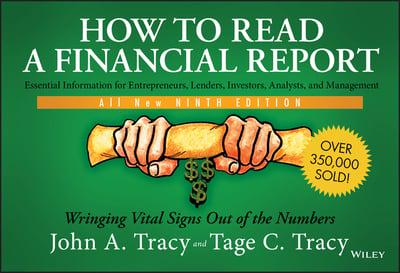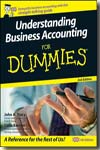How to read a financial report
wringing vital signs out of the numbers
- ISBN: 9781119606468
- Editorial: John Wiley & Sons, Inc.
- Fecha de la edición: 2020
- Lugar de la edición: Chichester. Reino Unido
- Edición número: 9th ed.
- Encuadernación: Rústica
- Medidas: 22 cm
- Nº Pág.: 208
- Idiomas: Inglés

Financial reports are used to provide a range of vital information, including an organization’s cash flow, financial condition, and profit performance (aka The Big Three Financial Statements). Financial statements are often complex and extremely difficult to understand for anyone other than accounting and finance professionals. How to Read a Financial Report enablesinvestors, lenders, business leaders, analysts, and managers to read, analyze, and interpret financial accounting reports. Designed specifically for non-specialists, this reader-friendly resource covers the fundamentals of financial reporting in jargon-free English. Topics such as sales revenue & recognition, costs of goods sold, sources & uses of capital/cash, non-cash expenses (e.g., depreciation expense), income tax obligations, understanding profits & financial stability, and financial statement ratios & analysis are covered throughout the book.
Now in its ninth edition, this bestselling guide has been thoroughly revised to reflect changes in accounting and financial reporting rules, current practices, and recent trends. New and expanded content explains managing cash flow, illustrates the deceitful misrepresentation of profits in some financial reports (aka Financial Engineering), and more. Further, end-of-chapter activities help readers learn the intricacies of the balance sheet and cash flow statement, while updated sections address shifts in regulatory standards. Written by two highly experienced experts in financial accounting, this resource:
-Enables readers to cut through the noise and focus on what financial reports and financial statements are really saying about a company
-Clarifies commonly misunderstood aspects of financial reporting and how companies can “financially engineer” operating results
-Offers comprehensive, step-by-step guidance on analyzing financial reports
-Provides numerous examples and explanations of various types of financial reports and analysis tools
TABLE OF CONTENTS
List of Exhibits vii
Preface to the Ninth Edition ix
Part One—Fundamentals
1 Starting with Cash Flows 3
2 Two Bedrock Financial Statements 11
3 Reporting Cash Flows 21
4 Fitting Together Financial Statements 27
Part Two—Connections
5 Sales Revenue and Accounts Receivable 37
6 Cost of Goods Sold Expense and Inventory 43
7 Inventory and Accounts Payable 49
8 Operating Expenses and Accounts Payable 55
9 Operating Expenses and Prepaid Expenses 61
10 Depreciation Expense and Property, Plant, and Equipment 67
11 Accruing Liability for Unpaid Expenses 77
12 Income Tax Expense and Its Liability 83
13 Net Income and Retained Earnings, and Earnings per Share (EPS) 89
14 Cash Flow from Operating (Profit-Seeking) Activities 97
15 Cash Flows from Investing and Financing Activities 107
Part Three—Using Financial Statements
16 Footnotes and Management Discussions 117
17 Financial Statement Ratios and Analysis 129
18 Financial Engineering 147
19 CPAs and Financial Reports 155
20 Basic Questions, Basic Answers 163
About the Authors 179
Index 181







